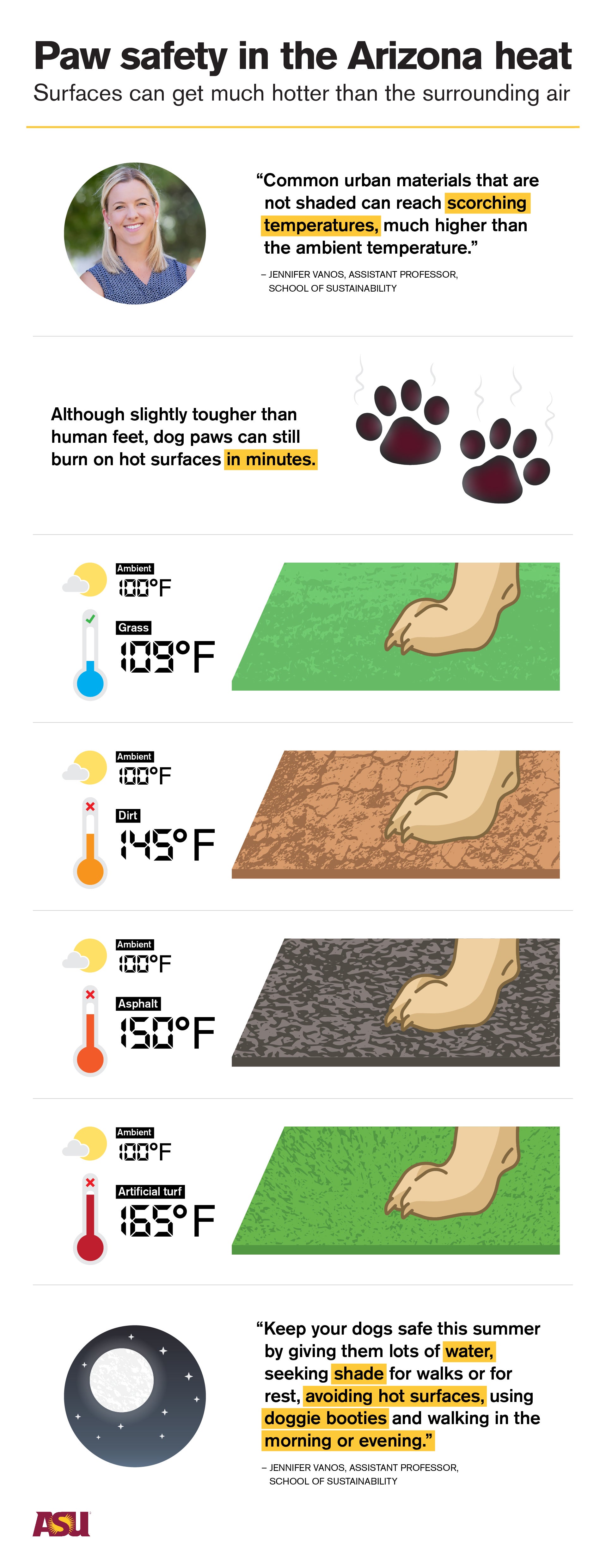Summer is here and as Arizona residents know, you really can cook an egg on the sidewalk.
More importantly for our four-legged friends, surface temperatures can exceed 160 degrees Fahrenheit in only 100-degree weather. And if you wouldn't want to go barefoot on the pavement, your dog probably doesn't either.
So whether you’re a seasoned dog owner or you recently adopted a new furry friend, check out these tips from Assistant Professor Jennifer Vanos, an extreme heat researcher from the ASU School of Sustainability, on how to keep your pet safe during walks.
Infographic by Alex Davis/ASU Now
More Environment and sustainability

New study on Arctic’s ‘Last Ice Area’ highlights the urgency for reducing warming
The Arctic’s “Last Ice Area” — a vital habitat for ice-dependent species — might disappear within a decade after the central Arctic Ocean becomes ice-free during summer, which is expected…

ASU fire expert Stephen Pyne on learning to live alongside fire
Stephen Pyne is having a busy retirement. On top of caring for chickens, sheep and citrus on his urban farm in Queen Creek, Arizona, the Arizona State University professor emeritus is being called on…

New interdisciplinary research highlights wildfire impacts on water and ecosystems in arid regions
As wildfires increasingly threaten arid regions, a new conceptual framework developed by a team of researchers offers a fresh perspective on the relationship between fire, water quality and ecosystem…

